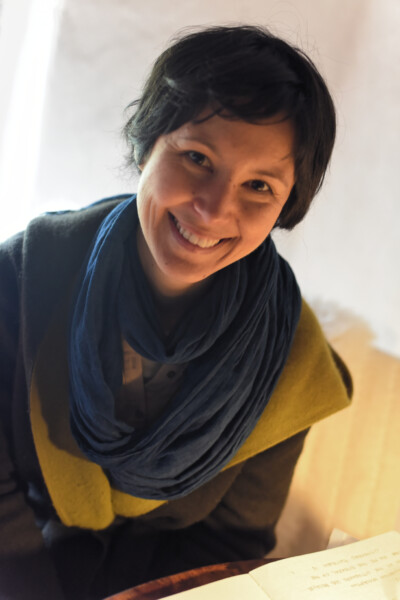In this podcast series, Kika Yang spoke with CITYMAKERS Lab participants about their personal motivations and background as city makers and invited them to brainstorm about the potentials of the CITYMAKERS platform.



What do you see as major challenges coming along with urbanization in China?
It would be about building belongingness to a city. Currently, the central complaint about Chinese cities is that they all look the same. This is an extreme apathy; it leads to lack of participation from the environment to resource development, because people simply feel distant from their cities. Without that soul and pride, there is no starting point to begin even a slightly more technical conversation. So, first I believe to reinstall culture, culture is at stake, the development of cities, urbanization is not limited by speed or money. It is exactly the problem of too much money, all at once, as put by Jane Jacobs. What we need is to gradually redevelop our cities from the core, from cultural spots and use these areas as educational centers to gather a collective effort from all citizens to care about their city.
What is at stake?
Several years ago, when Changsha redeveloped its waterfront (Wanda was the developer), they discovered a thousand-year-old furnace under the earth, the construction company simply sent preservationists and archaeologists away and demolished the site. Then, for months, people demonstrated against it, but after a while, because of a lack of public urban spaces for these kinds of debates and education, the movement died down. What is at stake is the last remaining belief that our cities are worth saving.
You co-produced the video “It is time to ask some new questions…” – What questions do we have to ask?
Asking the right question does lead to better answers. In fact, my question is: How do we increase our command over our living environments? We have already had a revolution in the digital realm, but architecture is disabling common people. How can we make it more open, more accessible and self-definable? In my mind, the answer begins with modularization. The blind spot would be modularization of the wrong spots, it should be the major infrastructure that needs to be modularized. As Bucky Fuller would agree, it needs to be lightened, replacing the concrete, which is carbon intensive, not on small bathroom elements, but on large dimensions.
What do you see as the future of city-making?
The future will be made by millions of city-makers enabled by more agile architecture for self-assembly, self-manufacturing and self-build. Millions of healing actions together bring our cities back to places that create jobs and healthy opportunities. In the end it will be accessibility and agility that is the only picture for the future of construction of buildings and cities. We can begin to imagine from there.
Tell us a bit what you do as a “community builder”.
One of my projects I would like to share in this context is “P8”, an experiential community in the city of Changsha, a second-tiered Chinese city of 7 million residents, my hometown. P8 is a prototype sustainable integrated space based on the belief that collaborative making, living, and working is the future. Is a vertical eighth-story building hosting top-down: An edible garden on the roof top over various space opportunities for profit and not-for profit businesses in the middle floors (e.g. such as maker-spaces and incubation labs for entrepreneurs with a focus on sustainability/ green tech, an education-lab and even a youth hostel) down to the ground floor with a community kitchen and a carpentry. The building was a disused modular building demonstration project, but we empowered this empty space with passion and innovation.
Who are your peers in China, what other innovators do you find inspiring?
I find Guangzhou Yigather community to be doing a great job.
What do you think German and Chinese cities can learn from each other?
I think Chinese cities are having serious problems with a “heat island effect” and storm drainage, “sponge city” is an issue. From my experience being in Berlin, I had seen the pavements weren’t cemented through but instead having removable tiles and layers of sand which was quite brilliant. I believe this is one helpful theme for German cities to share with China, yet of course China has the challenge of a different scale and much higher density. For German cities: I still think that the traditional Chinese concept of “one big roof for co-existence of many families” holds a potential worth studying. However, this concept is of course only visible any longer in the older and more organic parts of Chinese cities.
Daniel (Xianming) Zhang is a trained architect who studied architecture at Carnegie Mellon University in the US and continued a doctorate in India and Germany (Berlin). His father Zhang Yue, an environmental champion, founded Broad Group 28 years ago. With his productions of a series of viral internet videos of Broad Sustainable Buildings, Daniel introduced to the world his father’s invention, which are the world’s fastest, largest and tallest steel modular housing constructions to date. Daniel is working in the intersection of architecture and education in China. He is the founder of P8, and other social impact projects, such as recently IMPACT Hub Shanghai.
Contact & Links
danielzhang@broad.com
https://www.ted.com/tedx/events/17904